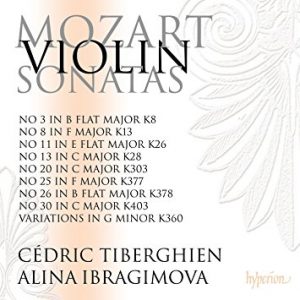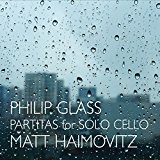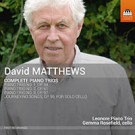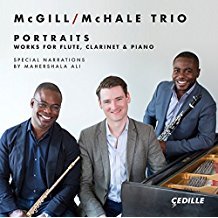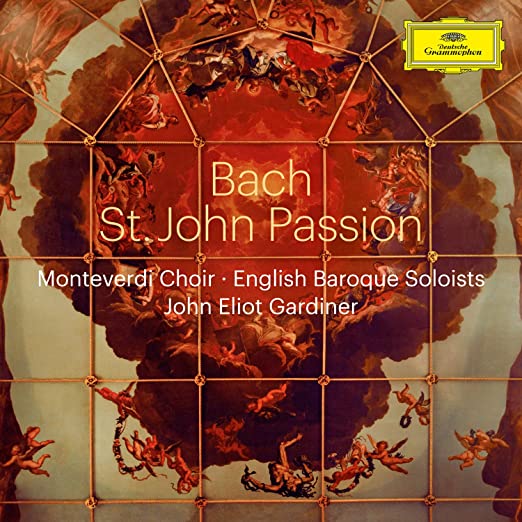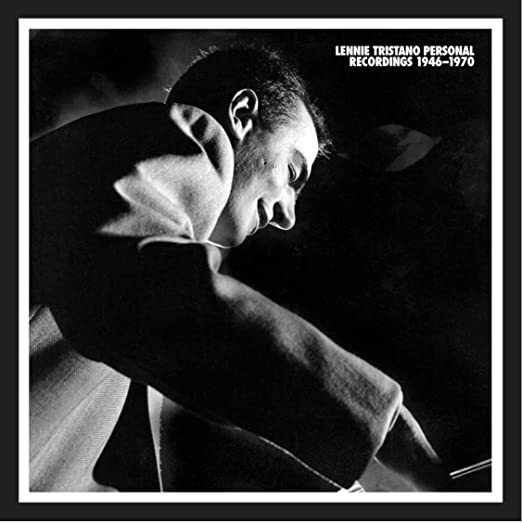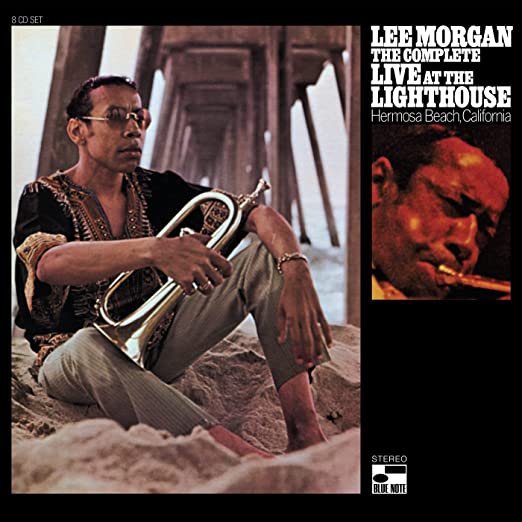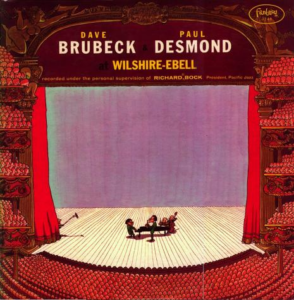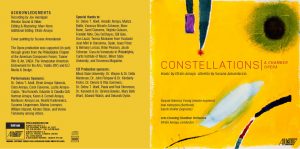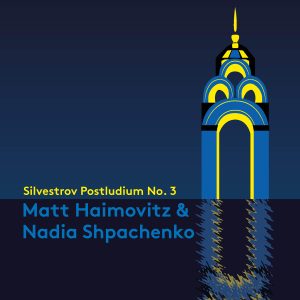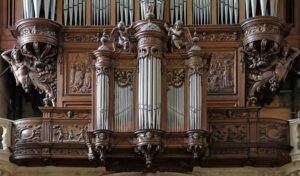Mozart Violin Sonatas, Nos 3, 8, 20, 25, 26, 30. Alina Ibragimova, violin and Cédric Tibeghien, piano. Hyperion CDA 68164. (2 CD's.)
What always strikes us about Ibragimova's and Tiberghien's Mozart is that every sonata feels freshly addressed. Each work is allowed to have its own musical life and identity. I discovered this with their first volume of this series quite a while back (this is volume 4) when I attempted to characterize their approach to the composer, as reviewers are expected to do. Sometimes they fly, sometimes they walk (there are a lot of andante movements), sometimes prance or sing. If there is a single characteristic that identifies their style, it would be her light touch and his percussive one, the contrast somehow accounting for the spirited musical 'life' of their performances. As I've said here before, it's what makes their Beethoven work; and it serves their Mozart equally well.
Some performers take us by storm, other sneak up on us, persuading us of the rightness of their approach as we continue to listen. In some of these sonatas (the early utterly simple and eloquent K 13), we find ourselves struck dumb. Has there ever been anything more beautiful and beautifully played than their second movement andante of this work? Probably, but we can't think of it as we listen. That's really all we have a right to ask of Mozart performances: that they stun us with their beauty.
Stay with this series, you won't be sorry.
Philip Glass, Partitas for Solo Cello. Matt Haimovitz, cello. Orange Mountain Music. 0117.
When I asked one of my would-be sons in law, a young cellist who practiced one summer in my Brighton (Massachusetts) kitchen (c. 1990) who his favorite cellist was, he said Matt Haimovitz. My Brighton cellist was good enough at his art that I took serious note of his recommendation and have never regretted it. Serious enough note that I sought out this album of solo works for cello by Philip Glass, which I surely would not otherwise have done. I have avoided Glass for many years since an early experience of his work that drove me away.
If your experience of Glass has been similar to mine, table it, as this album has forced me to do. Minimalism can achieve things on a cello that it never struck me it could do elsewhere, though the composer is well past pure minimalism here. As with most works for solo cello, Bach hangs in the background, sometimes suggesting that he too understood the art and power of repetition. He is especially recognizable in the earlier of the two partitas (2007). The recording itself is wonderfully rich and present. The sound of the cello on this recording is deep, clear, and also wonderfully lyrical on my JMR Offrandes, a quality they are famous for, especially in conjunction with Gilbert Yeung's consummate NSL amplifier.
Where has this music been hiding? Heimovitz said essentially the same thing about Partita No. 2 ((2010), when he and Glass himself heard it for the first time in 2015! Bach has left the building but minimalism has re-entered, though uninsistently. Insistence is the quality of minimalism I have always found most off-putting. Here it is almost thematic. The music uses minimalism rather than giving us the sense that it is being used by it. Partita No. 2 is generally more searching than No. 1, more introspective, a quality that minimalism in its purer form often works against. This partita can also be playful: there is a freedom to it that is absent in the earlier partita. Partita No. 1 doesn't need to be free, but No. 2 clearly does...and is. It can even be rapturous. Leaving this work on a shelf from 2010 to 2015 "was a crime against music" Haimovitz said to to Glass. In case it's not obvious at this point, this recording is the work's debut.
David Matthews, Complete Piano Trios. Leonore Piano Trio; Gemma Rosefield, cello. Tocatta Records, TOCC 0369
I am reluctant to oversell minor composers who appeal to me, especially Brits to whom I'm often drawn, like David Matthews. But when I got to the third and fourth movements of his Piano Trio No. 1 here, I decided I was going to have to take the risk.
Matthews and his younger brother Colin (who has composed two fine cello concertos) both served as "assistants" to Benjamin Britten in his later years, but both have proven strong enough in their own right not to absorb any conspicuous influence. I've spent a good deal of enjoyable time with David Matthews' string quartets and so was pleased to see this album of his piano trios appear. They are not going to blow any houses down, but the more I hear them the more I'm comfortable with my allegiance to his talent and musical voice. Stylistically, especially in his slow movements, this music is wonderfully English: sonorous and modest.
If you've found your taste has aligned with mine over the years, give the elder Mr. Matthews your dime.
McGill/McHale Trio. Portraits: Works for Flue, Clarinet, & Piano. Music of Chris Rogerson, Valarie Coleman, Guillaume Connesson, Paul Schoenfeld, Philip Hammond. Çedille CDR 90000172.
I hate mixed media recordings (the first work here—but just the first—is for trio and spoken voice); but I loved the music and so skipped the cuts with voice and solved my problem, one which you may not have.
The music on this album is mainly by contemporary composers. It is jazz inspired and modern, not to say modernist; and the sound is magical. I became as addicted to the sound of the piano in particular as I did to the energy of the performance and the brilliance of the music. We know of clarinetist Anthony McGill, who has become one of the very best classical performers on the instrument around. He is joined here by his flutist brother, Demarre McGill, and a wonderful pianist, Michael McHale.
This is one of those albums which will disappear if it doesn't get some notice. Take notice.
Systems used for this audition: Resolution Audio Cantata CD player w/BlackJack power cord; Blue Circle NSC preamplifier and NSL amplifier with Jean Marie Reynaud Offrande Supreme, V2 loudspeakers; Crimson interconnects and speaker cable; Mapleshade Samson equipment rack.
Bob Neill, a former equipment reviewer for Enjoy the Music and Positive Feedback, is proprietor of Amherst Audio in Western Massachusetts which sells equipment from Audio Note (UK), Blue Circle (Canada), Crimson (UK), Jean Marie Reynaud (France), Resolution Audio (US), and Tocaro (Germany).




